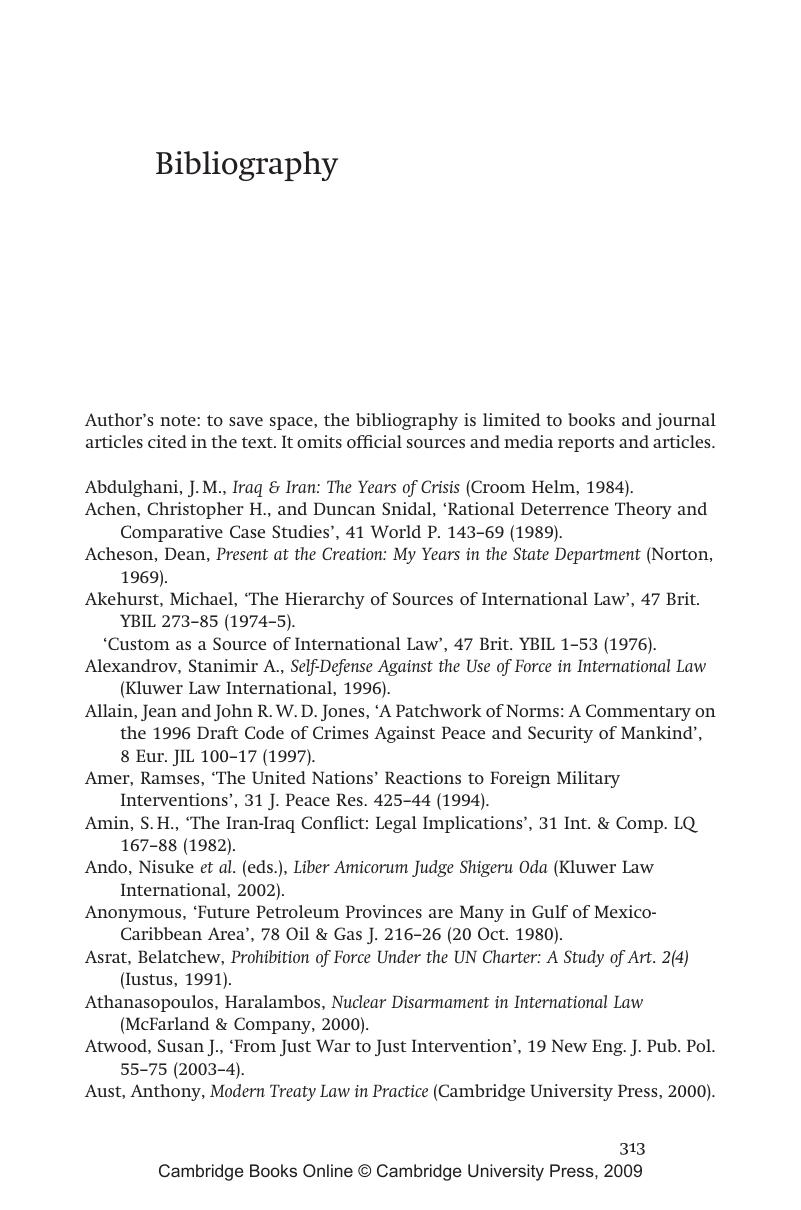Book contents
- Frontmatter
- Contents
- Foreword
- Preface
- List of abbreviations
- 1 Birth and infancy of a Charter rule: the open framework
- 2 The menu of choice: a guide to interpretation
- 3 Precedents of the international court of justice
- 4 Deciphering post-Charter practice: means and limits
- 5 Open threats to extract concessions
- 6 Demonstrations of force
- 7 Countervailing threats or: threats in self-defence
- 8 Findings and conclusions
- 9 Epilogue: the law in operation
- Annex
- Bibliography
- Index
- CAMBRIDGE STUDIES IN INTERNATIONAL AND COMPARATIVE LAW
- References
Bibliography
Published online by Cambridge University Press: 04 July 2009
- Frontmatter
- Contents
- Foreword
- Preface
- List of abbreviations
- 1 Birth and infancy of a Charter rule: the open framework
- 2 The menu of choice: a guide to interpretation
- 3 Precedents of the international court of justice
- 4 Deciphering post-Charter practice: means and limits
- 5 Open threats to extract concessions
- 6 Demonstrations of force
- 7 Countervailing threats or: threats in self-defence
- 8 Findings and conclusions
- 9 Epilogue: the law in operation
- Annex
- Bibliography
- Index
- CAMBRIDGE STUDIES IN INTERNATIONAL AND COMPARATIVE LAW
- References
Summary

- Type
- Chapter
- Information
- The Threat of Force in International Law , pp. 313 - 331Publisher: Cambridge University PressPrint publication year: 2007



